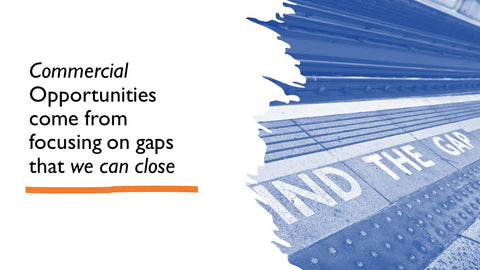Category Demand Spaces
Demand Spaces unlock opportunities by identifying consumers' un-met or changing needs.
What exactly is a Demand Space?
Demand Spaces are the start point for category strategy development as they explore and identify what consumers want and need by sector.
Within the term Demand Spaces, the space refers to the GAP between what consumers and shoppers want or need, versus the current offering within a given category,
This gap allows brands and retailers to identify and unlock opportunities to increase consumption and therefore drive incremental sales.

How do you identify relevant demand spaces?
Demand spaces start with identifying your target consumers, who they are, what they want, when and why.
Most businesses start by looking at trends - but trends are deliberately high-level and they just tell us the direction in which behaviour is changing or likely to change.
Trends need to be evaluated and interpreted to work out how your business and brands can capitalise on them.

We help brand teams to work out what the trends mean for their category and what motivates their target consumers, and most importantly where the gaps lie.
The next step is to evaluate and prioritise the demand spaces the business wants to focus on, by working out and agreeing the demand the business can meet now, which ones to park, and which should form part of an NPD pipeline.
Steps to successful Category Strategy development:
The category strategy development process is often referred to as a funnel as all the elements should start from, and link back to, driving consumption.
Step1: Business identifies the priority unmet or changing needs for their target consumers, known as Demand Spaces
Step2: Commercial team maps out how the business can meet these needs and drive growth, hence the terminology Category Drivers.
Step3: Now that the opportunities to meet demand and drive growth are clear, the business can create a clear and compelling Category Vision
Step4: Business identifies tactics to deliver against each category driver, and separates these growth Enablers into short, medium and long term plans.
How can we help? Dynamic Reasoning's interactive and thought provoking process to develop effective category strategies speeds up execution and reduces time to implementation delivering growth for the business and their customers.
What makes the Dynamic Reasoning approach to category strategies so successful?
We apply our tried and tested approach of Propensity Analysis to developing category strategies and category management projects.
This means focusing on propensity to increase consumption and therefore purchase, rather than starting with the shopper and working back.
Ultimately this creates a sustainable category strategy rather than one that’s heavily reliant on pushing products into the shoppers’ basket.
Plus this delivers what buyers are looking for which is evidence of incremental category growth, making it easier to sell the category vision and plans externally.
Like to know more?
Please click here to arrange a call if you would like to discuss your category demand spaces or any other elements you'd like to develop or strengthen.
Alternatively please email if you have any questions or would like to know more about how we can help to strengthen your category strategy.
Please email or arrange a call if you'd like to know more about our category strategy methodology and frameworks that deliver sustainable growth
